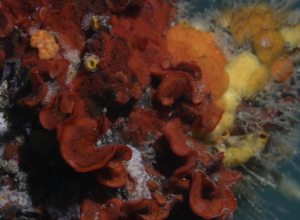
January 18, 2018–The peer-reviewed science journal Marine Biology just published a paper on non-native species occurring within Monterey Bay NMS. Led by Dr. Chela Zabin, Smithsonian Environmental Research Center, a team of scientists surveyed intertidal and subtidal sites in the sanctuary for non-native species.
More non-native species (NNS) are reported from harbors, estuaries and protected embayments than in wave-exposed, open-coast habitats. In California (USA), hundreds of NNS have become established in international ports, and dozens are known from smaller estuaries. In contrast, only 22 NNS are reported from the state’s 1350 km of open coast. As a result, the perception that open-coast habitats are not vulnerable to invasions has persisted. Management and monitoring focuses on ports and estuaries; the last major monitoring effort on the open coast occurred in 2004. Much of the species-rich central California coast is now part of a network of marine protected areas (MPAs). We surveyed 12 wave-swept rocky intertidal and eight subtidal sites (from 37°53′40N 122°42′30W to 36°31′16N 121°56′22W) for NNS. At least one NNS was detected at half of the sites surveyed, but most were not widespread or abundant. One exception, a bryozoan in the Watersipora spp. complex, known primarily from ports and estuaries, was found at multiple sites, and was abundant at some. Another nonnative, the alga Caulacanthus ustulatus, was abundant at a single site. MPAs were just as likely as sites outside of MPAs to have NNS. For subtidal sites, proximity to a harbor was correlated with the abundance of non-natives. Our findings suggest that our study area is still relatively uninvaded, but the success of Watersipora within some of these highly diverse rocky shore sites underscores the potential vulnerability of high-value open-coast systems to invasions.
Access a copy of the paper via this link. To learn more about genetic research on Watersipora, use this link.